Mark Hosler is one of the founding members of the experimental music collective Negativland, which has pushed the boundaries of sampling and appropriation in ways that have led to artistic triumphs and legal headaches.
Negativland’s first album came out in 1980 while Hosler was still in high school, and the band broke through to college radio with the 1987 album Escape From Noise. They gained some noteriety when they claimed that one of the songs from that album inspired an axe murderer’s rampage, a hoax which the band actually created to avoid having to go on tour.
Along the way, Negativland coined the term and advanced the notion of “culture jamming”, an anti-consumerist movement to subvert mainstream cultural institutions. This came to a head with their 1991 release of an EP called U2, which led to four years of legal battles after they were sued by U2’s record label for unauthorized sampling of “I Still Haven’t Found What I’m Looking For” and misleading artwork.
This interview was for a preview article for noozhawk.com for the 5/24/18 visit by Mark Hosler and fellow Negativland conspirator Wobbly to the University of California, Santa Barbara. Sponsored by UCSB’s Center for the Interdisciplinary Study of Music, this visit includes a Roundtable Workshop and a concert. The interview was done by phone on 5/11/18. (Stefan Müller photo)
Jeff Moehlis: Can you tell us a bit about what people can look forward to when you come to Santa Barbara?
Mark Hosler: Before the show, we’re going to be doing an afternoon panel with a music professor named David Novak about appropriation and collage in music and art, intellectual property issues and copyright law. I’m sure that’ll go in different directions.
We’re in a political moment where many of Negativland’s ideas of culture jamming, and trying to point out problems in the media and critique the media through our work, we are now seeing that, in a way, Trump and his crew are sort of the dark side of that. They’re culture jammers, too. We never envisioned what would happen if a culture jammer came along who’s a lying sociopathic malignant narcissistic Machiavellian [laughs]. You know, someone who was in it for themselves, not to help everybody else.
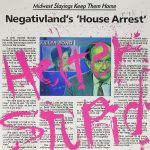
Going back to some of our older work, Negativland was pointing out things about what you might now call “fake news”, the idea that you couldn’t trust the media. We never meant to say that you can’t trust all of it, because that’s kind of what Trump and his friends are saying. They’re just sort of painting it with this broad brush. Of course, what they call fake news is just news they don’t like.
But we’ve been having this conversation amongst the members of Negativland about how bizarre this moment is, where a lot of these things – through our art and our performances and writing and radio shows and stuff – were sort of pointing toward a different perception, a different take on news media and information. And encouraging the listener to be more critical and thoughtful, and don’t believe what you read. That goes back to work we were doing back in the late ’80’s, where we did that whole axe murder hoax.
So now we’re in this moment where those ideas have mutated into this thing that’s truly evil and terrible, and very destructive. I don’t want to live in a world where we’ve decided that there are no facts, that truth is just whatever we want it to be. That whatever we feel we’d like to be true is therefore true, because we want it to be. That is not a world that I want to live in [laughs]. But that’s the world that’s being pushed now by the people in power. It’s very strange.
In fact, I just saw Daniel Ellsberg – he’s the guy who leaked the Pentagon Papers. Noam Chomsky was in the audience, which was kind of amazing. Daniel Ellsberg, who is in his late 80’s and is still absolutely sharp – Nixon broke into his office and that’s what lead to Nixon being brought down through Watergate – but even Ellsberg said, “My friend Noam and I have done a lot of work where we’re trying to get people to think critically about the news and the media and information, and we’re now in a moment where the guy running the country is talking about fake news.” It was really kind of heartening for me to think, “Even Daniel Ellsberg is realizing how extremely bizarre and fucked up this moment is.”
These tropes that we’ve been putting out there and trying to promote as a form of media literacy and activism around these issues, it’s kind of been weirdly hijacked. As I said, we never predicted that somebody would come along and take these critiques and these ideas, but talk about it from a point of view where it’s a completely selfish, self-serving power grab. It’s not about trying to really help people or educate people or create a more just and peaceful world. So it’s very bizarre. Sorry, that was a long tangent.
I guess I say all this because we’ve been dealing with these issues for a long time now. I mean, Negativland’s first record came out 38 years ago this month, and at the time, I thought, “I can die now.” I put out one record. I was still in high school. I didn’t need to do anything more. That was fine. I was so incredibly thrilled, and never would’ve imagined our work would’ve continued to evolve and grow, and we’d explore all these other avenues and get into the trouble we got into. And so, we’re watching these things continue to change and morph, and we hope to reflect that in our current creative work, that we’re not stuck and frozen in 1989.
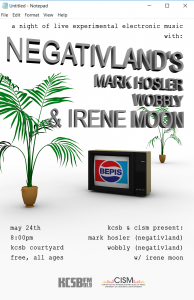
All that being said, the work that Jon [Leidecker] – or Wobbly – and I will be doing at the show in Santa Barbara, we’re both going to be doing solo performances, and we’ll probably do a duo at the end, as well. And of course the wonderful Irene Moon is on the bill. She’s terrific, and she lives in Santa Barbara. Our solo work is going to be instrumental, all sound-based. We’ve been working towards a new Negativland record, and new Negativland performances, so probably the duo at the end will be us workshopping some new ideas for Negativland stuff [laughs], in kind of a loose improvisational way, where we’re not worried about it being called Negativland. But both Wobbly and myself have a practice of exploring stuff solo, where you can do things that don’t work in a group performance setting. So it’s something that we were both interested in taking out on the road, and I was able to set up a few shows up and down the coast.
My live setup is a lot of homemade electronics, and all sorts of unstable soundmaking devices that I can sort of control, but they’re always surprising me, so that it’s kind of like I’m collaborating with the machines, and I’m trying to wrangle them into some shape that has a sort of musical form. A dynamic form, so that it’s fun for people to listen to. But you’re actually watching me try to figure this out, which is why I have lights pointed down at my gear. There’s a lot of people now who do experimental music on laptops and things, and they always play in the dark, which personally drives me crazy. I always think, “I paid money to come see you. I want to watch you perform. Don’t play in the dark!” But that’s what a lot of people do, and I’m not doing that [laughs]. I have little clip-on lights that actually point right down at my gear, and I tilt the gear up a little bit towards the audience so everyone can see what I’m doing.
The joy of improvisation can be this exploring, this manifesting of something being created right in the moment, and there’s something that can be quite electrifying about it when it’s working. And of course it can also be the worst, most tedious jerk-off kinda thing [laughs]. Hopefully, because I’ve been doing this for 38 years, I’ll be on the better side of things.
JM: I read that one of the instruments you’ll be playing is called a “Booper”.
MH: Yeah, designed by one of the members of Negativland, David Wills.
JM: Can you give a quick description of what the Booper is?
MH: A Booper is some amplifiers, like out of a clock radio or something, and the output feeds back into the input so they make feedback. That’s the kind of thing where if you ever hear a guitarist getting too near his amp, the signal feeds back and goes, “Wooooo”. Over the years people have figured out ways to control feedback in a musical way. There’s a whole tradition of it in experimental music, going back to the 1940’s, and in fact Wobbly has a whole lecture he does on the history of feedback in experimental music. And then you have Jimi Hendrix and people like that, who started exploring it in a rock/pop context.
So the Booper is a feedback device, but there’s different capacitors and resistors that are modulating this feedback, so it actually ends up sounding like these alien insect cartoon sounds. I think it’s quite funny sounding, actually. And it’s really unpredictable, so it’s a lot of fun to play with. It always sounds good, that’s the thing. No matter what happens, it always sounds really cool. I love it. But you never know what it’s going to do. It’s a lot like the person who created it [laughs].
We have about 10 of them now. There’s about 10 Boopers at this point. But the first one, David made it in high school, I think, in the early ’70’s. He used to wear it inside of a jacket. It wasn’t even in a box. The wires and knobs were all attached into the jacket that he used to wear around in school with a speaker built in, and he would make booping sounds. That eventually ended up in a box.
David is one of the founding members of Negativland, so the Booper has always been a delightful little audio secret weapon that we’ve had ever since. About 10 years ago he started making more of them, and they’re all different. They’re all sort of in the ballpark of what I described, but they all have their own unique character to them.
I’d say that what I’m doing is kind of alien electronic soundscapes, but it can get pretty dramatic, too. I use beats, there’s rhythms, there’s things like that. It’s definitely on the weird, experimental side, but I hope that it’s engagingly, accessibly strange. That’s what I’m aiming for.
My setup is all hardware devices all wired together. For Jon’s setup for his particular performance he has a bunch of iPads and iPhones all feeding into each other, and he’s using these pitch-to-MIDI converters, which hear the sound a device is making, converts it into digital note information, feeds that to another device which does the same thing, and they do it in this cascading loop. So it’s like a MIDI feedback loop. And then each device has different sounds in them being triggered, and the way the interact with each other is absolutely bonkers. It’s wonderful. I actually love hearing him perform. It’s really fun.
He’s playing his devices, and he’s inputting some note values, too, you know, playing a keyboard, but he is also on a journey with you, the audience, as far as “where is this going to go, and what does it do?” He’s done a lot of these performances now, so he’s gotten really, really good at corralling the crazed out-of-control-ness of it into something that’s really fun to listen to. It’s always full of surprises. As we’re touring, every night is going to be pretty darn different. We’re also playing in Oakland on the 19th, San Diego on the 26th, and Los Angeles at Coaxial on the 27th.

JM: You mentioned that the first Negativland record came out 38 years ago. What was the initial vision for Negativland, when you first started?
MH: I can speak only for myself. I grew up in a very middle-class, very white suburb east of San Francisco, and I was learning about underground films, comics, and music. I was really into prog rock when I was 13 and 14, all that ’70’s stuff from Gentle Giant, Yes, King Crimson, Genesis, and Pink Floyd – all those groups before they became horrible. By the late 70’s they were all just awful [laughs]. And I actually go back to that stuff. All that prog rock from the early to mid-70’s – I still think it’s great. I still just absolutely love it. I was really into Mike Oldfield, too – he’s kind of a prog rock guy. I loved his stuff in the early ’70’s.
But I started learning about minimalists like Philip Glass and Steve Reich, and German electronic Krautrock – there was Neu! and Cluster, Kraftwerk, Harmonia, Faust, groups like that. I was getting into post-punk. Punk had happened, which I appreciated the ethic of and the spirit of it, and I feel like Negativland really tries to stick to a very punk kind of ethic and spirit, but I thought punk music was kind of boring. So post-punk – when you started having things like Gang of Four, Pere Ubu, Wire, Public Image Ltd, things like that – was of interest to me.
What else? I was listening to a lot of Firesign Theatre records, Monty Python records. I mean, if you put all that in a blender, that was what was going on in my brain. There was some record that I wanted to hear that I couldn’t find. I still love all that music, but there was something I wanted to hear that was a mixture of really experimenting with strange sounds, but there was kind of a pop sensibility, some kind of a musical sensibility to experimenting.

I loved hearing things that were taken from their original context and being reused. I occasionally found things where people mixed in… I think on Pere Ubu’s Dub Housing, at the end of one side there’s a track called “Thriller!”, and it mixes in the recording of a horror movie or something. And there would be things where found sounds were blended into the music, and it really electrified me. I just was so interested in that. So I would occasionally hear moments. I just thought, “I want a whole universe of that. I want to hear a whole record of that.”
And it just dawned on me… I was working on making animated monster movies, and I was a very creative kid. I was writing screenplays adapted from novels when I was 13 or 14. But I couldn’t figure out how I was going to grow up to be a big-time filmmaker, because back then how could you break into it? It was just impossible. You didn’t have things like desktop video now. Nowadays you really can do professional films for very little money if you’ve got the talent and the will and the vision to do it. So I was getting interested in sounds, and I was very into film soundtracks, too. I was into Werner Herzog film soundtracks by Popol Vuh, Bernard Hermann, people like that. The soundtrack to Logan’s Run is great. Jerry Goldsmith. He does some pieces that are supposed to sound futuristic, and they’re all done with synthesizers. They’re actually beautiful, great pieces.
So I thought, “I’m going to try to make this stuff.” I started borrowing equipment, and I talked my music department in my school into lending me a synthesizer and some other instruments. I think one high school Christmas vacation in my little ten foot square bedroom, I crammed in a drum set, a cello, a saxophone, a bass guitar, an electric guitar, an electric piano, a String Ensemble synthesizer, a Maxi-Korg synthesizer, and a little cassette deck and a mixer. I just started messing around.
I had an after-school job where I was calling people up on the phone to ask them questions about their favorite television shows, and that’s where I met Richard [Lyons] and David. Richard and David were into a lot of the same music that I was, and it was that typical thing of teens bonding over their mutual love of weird music [laughs]. They also were experimenting with sounds, and David knew how to make tape loops. David already had the Booper, which of course when I encountered that it just blew my mind. So that’s kind of how that happened. We just said, “OK, we’re going to make this sound together.”
That was about it. The degree to which our work evolved into being more political and more activist and more of a critique of things, that came later. That came from continuing to do the work, getting older, becoming a little more enlightened and a little more politically aware, and starting to realize that you could use collage as a way to talk about our culture in a way that was very interesting to us.
I’m currently now working on a reissue of our first record, and Richard who died just two years ago was working on it with me, and I promised him before he died that I would finish it. It’s been hard. We’re doing a limited edition reissue, and that first record had hand-made, one-of-a-kind covers, every single one unique, and over the years we made 9000 vinyl and 6000 CDs. And every single one is different. I’m making more of the covers in the same way I did back then using pictures from old home improvement magazines, wallpaper samples, etc. They’ll still be unique, and they’ll all be done in the exact same style of the original issue.
We found the old master tapes. Don [Joyce], from Negativland, who died… We had three members die in the last four years. It’s pretty intense. They’re also, of course, my oldest friends, too. To lose your friends, and basically your family, your collaborators… But when Don died we found the original master tapes of the first Negativland record. It was buried in his stuff. We thought it was lost. So Peter [Conheim] in Negativland has done a remastering job that’s really great. It sounds like about 15 coats of paint have been stripped off it. So it’s going to be remastered, and it’ll have cool bonus stuff. It will be a limited edition thing on vinyl.
So I’ve been revisiting that material, and kind of thinking, “Wow, how did a bunch of teenagers growing up in the suburbs come up with something that’s this out there?” Because it’s so many years away from me now and in my past, it sort of startles me [laughs] that we did it. I think the record comes off as more conceptual than we knew, because we had the wallpaper samples and the recipe insert, and there were a lot of things about it that made it seem like sort of a bit of an exploration and riff on the experience of growing up in the suburbs. It mutated into some strange soundscape. We weren’t trying to make it conceptual, it was just from screwing around. But I think we kind of just intuitively were into working with what was in our world around us, our landscape, our soundscape, our earscape, which meant we were using recordings from the TV, from the radio, our parents in the kitchen cooking and baking, our pets outside barking. That stuff just made its way into the work.
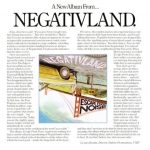
JM: Your album Escape From Noise is viewed by many people as a breakthrough for the band. What are your reflections on that particular album?
MH: By the time we made our third record, A Big 10-8 Place, we were really deeply exploring tape editing. We were cutting up tape with razor blades, and we wanted to take that technique to a compositional place. We used to use tape editing to make tape loops and to cut tracks together, but there’s a track on Side Two of Points called “Babac d’Babc”, that was a piece where Ian [Allen], who’s the other member who died, said, “Why don’t we take this tape cutting up thing we’re doing” – there were three pieces that we weren’t totally satisfied with – “and why don’t we take these three tracks and intercut them with each other. Chop them up into chunks, and compose a piece out of these other pieces.” In a way, use our own sounds as found material to cut up and rearrange.
That was so exciting to us as a track that the next idea was to use that approach for an entire record. Let’s explore that for a whole record. And that becomes the record called A Big 10-8 Place. That record took three and a half years to make, and it has literally thousands of tape splices. This was all pre-digital, where you cut up tape with a razor blade. So we explored that, and that’s a record I still enjoy.
It led to, “OK, we’ve got that down. Now can we take our skills that we’re developing and do something that’s a little bit more conventionally musical?” Maybe make the tape loops be in 4/4 time. Cut up sounds and layer them on top of rhythms where they actually fell into place in a way that’s musical in a more conventional way. So that’s what Escape From Noise was at one level, exploring that. That was pushing things forward and becoming more conventionally musical. A Big 10-8 Place is a concept album that’s all about the suburbs and where we grew up, very specifically that. And Escape From Noise is exploring these notions of noise, sound, how it affects us through media and pop culture.
I look back on that record now, and the one thing that I actually wish is that we were messier with how we put the noises in. We got good enough at doing one thing, but when I listen to those tracks now I wish there were more crazy sounds on top of some of those pieces. It’s a little too clean and tidy.
We are in the midst of slowly creating a new Negativland album, which is probably going to be a double album because there’s a lot of material. We’re never going to mention Trump by name on the record, but it is very much us doing our best to respond to the dark dystopian insanity that we find ourselves in right now as a country and as a planet. It’s definitely trying to use all of our different abilities, and definitely making sure to put in funny and crazy sounds on top of the more musical bits.
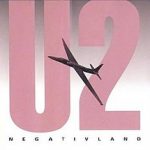
JM: Your legal case with U2 and Island Records is thoroughly documented, so I don’t want to rehash that. But it’s now 20-plus years later. What would you say is the most important thing you learned from how that whole thing played out?
MH: Personally, the value of pursuing your creative vision, and of not backing down, and doing your best to proceed in a fearless way. I credit that to the fact that I’m part of a group. This is not about that I was that strong of a person. I don’t think I am. But because I was part of a collective, I think that together as a group we were able to fight the good fight, and turn that lawsuit into a giant conceptual art project which we tried to use as a way to further the conversation, which seemed at that time to really need to happen. What is property when things are digital? What is art and creativity when the world you’re living in is not just clouds and the sky and flowers and trees and love songs, but it’s U2 music that’s playing that you don’t want to hear? It’s a Pepsi ad everywhere you go. It’s Bank of America logos, and Wells Fargo on every corner. It’s pop songs and media and information. We’re just swimming in it.
So the idea that someone says, “This is all privatized and you can’t touch it as an artist,” to us was absurd. It was just silly. Yes, we’re even going to make art using other art – that’s OK. That was our argument. This ought to be allowed, because we’re not counterfeiting someone’s work, we’re not bootlegging it. We’re using bits and pieces of things to then make new work that comments on the work that we’ve appropriated, that uses what we’re repurposing toward some actual thoughtful ends. I think the U2 record is also very funny. It was also responding to this corporate-media-saturated world that we live in. Now, all these years later, that world is only infinitely worse, because everyone’s on their devices non-stop. Someone must be tracking the average number of ads that a human being was seeing in a day in 1980, 1990, 2000, 2010 [laughs]. Because that would be good to know. I bet you that number has just gone through the roof. It’s sort of insane.
In the early ’90’s we were seen as making a radical outlaw argument, that we were even maybe crazy. But it only seemed to us to be very commonsense. This is just a very basic thing – human beings have always made art and objects and culture, and we make it in response to the world that we live in, and we make it using the tools we have available. As I was saying earlier, the world we live in, unless you’re living on an island in the middle of the ocean, you are experiencing all of this different branded corporate media and popular culture all the time, often willingly and a lot of it unwillingly.
And the tools you have aren’t just pulling a burnt stick out of the fire and using the burnt charcoal end to draw a mammoth that’s outside your cave on the wall where you’re hiding [laughs]. It’s that you have capturing technology, that you have a smartphone you can point at something, you can grab something sonically or with video or an image. And you can reuse it. These digital devices make it incredibly easy to reuse things, to share things, to cut them up, collage and do stuff with it. That now, as a practice, is very mainstream. It’s easy stuff to do. It’s a very, very different world.
So I can see now what happened back with the U2 single, I see that we did our best to help further that cultural/legal conversation, but, as I said, I think that the biggest takeaway for me was really about sticking to your guns. If you have a good idea, do it. Don’t worry about the consequences. As long as you’re not actually hurting anybody [laughs].
The only thing that hurt U2 was that they tried to crush us, and the publicity around it made them look bad. Our actual project didn’t hurt them. How could it? They were the largest rock band on the planet Earth. If you know that expression, it’s like water off a duck’s back.
But it did rankle them. The wild thing was – and this is one thing that I also learned that’s amazing to me – how people in power can be the most petty, small-minded, and power-mad; I mean, it’s amazing. Obviously we’re seeing this in evidence daily in the news now coming out of D.C. – but it was incredible to me that they took such offense to our project, and bothered to go after us. If they had just ignored it, it really would’ve just vanished [laughs]. Nothing would’ve come of it.
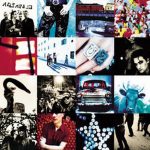
But we learned years later that they took great offense. The head of business affairs for Island Records, which was U2’s record label at the time, it wasn’t just business. We met people and talked to people who knew them, and they said, “No, they actually were pissed off. They were mad at you. It was an insult that you dared to mess with their intellectual property, and made fun of them.” I mean, you’re kidding. Really? Because I thought they shut us down because they thought it was a good business move, because U2 had a new record coming out at the time, Achtung Baby. But no, it was more than that. I talked to people who talked to Chris Blackwell, who was the head of Island Records, to U2’s manager Paul McGuinness, to members of U2, to people in Island Records. We had inside people, and we got information back about how personally they took it.
JM: Is it correct that Casey Kasem wasn’t upset about it?
MH: That is what he said to the public. He took the high road publicly – to his credit he did. He said, “Well, I don’t like what they did but it’s a free speech issue, and this should be allowed to exist.” And that was very enlightened and magnanimous of him, and he said that in public, in an interview that actually was done with someone I know [laughs]. But in private his lawyers sent us a letter that said that if this thing ever sees the light of day again, we will sue you.
We were also sued by our own record label, SST Records. We were sued by the founder of Black Flag, Greg Ginn. I think part of why the media found the story so interesting, there were the highfalutin issues I’m talking about about culture, intellectual property, art, activism, creativity in the modern world. But the soap opera aspect was all about private behavior versus public personas, that you had a lefty do-gooder group like U2 who’s actually privately crushing to death this little tiny nothing of an underground avant garde group. You know, Casey Kasem, as I said, said one thing publicly and another thing privately. And then Greg Ginn, who was a punk rocker guy whose motto for his label was “Corporate Rock Still Sucks”, he was suing us. It didn’t make anybody look good. When hypocrisy comes out in how people behave, that can make for a story that the media finds interesting.
JM: What advice would you give to an aspiring musician?
MH: [laughs] Oh, wow! I’m now old enough, I’m enough of an elderly man in the experimental music world that I’m like, [mock elderly tone] “You kids…”
Well, my advice would be what I was saying earlier. I was a teenager, and I just had a crazy idea with my friends to make this record. Did we think hardly anyone would want our record? No. We thought there would be an audience for it, but that it would be very tiny. But that was fine – we were happy with that. We were happy to reach a small number of people. I would say that if you have a creative idea, something that absolutely drives you, inspires you, lights you on fire, by any means necessary make it happen. Be creative.
Another bit of advice that I would give is that we have all grown up in a culture that feeds us ideas of what it means to be successful, and those ideas are toxic, they’re bullshit, and they’re very destructive. But we see them all the time. We’re constantly immersed in seeing celebrity culture, Reality TV culture, success culture.
I think that we all end up internalizing notions of success that are fed to us by our celebrity-obsessed pop culture and our American ideas of hyper-capitalism, that making it is by succeeding at all costs, the person with the most money wins, etc, etc. And those notions get inside of you in all kinds of subtle and not so subtle ways. They’re deeply destructive, they’re toxic, and I think they need to be deconstructed. And if you come up with your own notions of what it means to succeed, then you’re much more likely to keep doing whatever it is you do.
The first Negativland record came out, and we consigned it to two record stores in the San Francisco Bay Area. That was all we knew. This is 1980, right? And we thought that maybe over the next five years or so that we’d sell a few hundred, and that would be fine. We only made 500 of them [laughs]. And so two weeks after it came out we get a call from a record distributor who says, “Hey, we saw your record in this store. We like it. This is really interesting.” I think they also were intrigued by the fact that this was a bunch of teenagers in the suburbs who just made this thing. They said, “We’d like 100 copies”, and we were just flabbergasted. “What!? 100 copies. Wow! Oh my God! Sure, OK!” Two weeks later they call and say, “Oh, well they’re gone. We’ll take 200 more.” And what I remember – at this point I’m 18 years old – I remember saying, “Well, wait, I don’t understand. Where did they go? Who bought them?” He said, “We sell to other record stores all over the place.” I said, “What do you mean ‘all over the place’?” He said, “Oh, they’re in Amsterdam, L.A., New York, London, Berlin, Tokyo.”
For me, because our notion of success was so modest, when he told me this it was like my head exploded. It was like someone telling me, “You just sold 10 million records, and you’re Number One with a bullet in the Top 40.” So the encouragement from that, the thrill, the excitement – obviously it’s not that we were starting to make money, because we weren’t – but it was just that we were reaching people. That’s why you do this. You do this to reach people. It was just incredible.
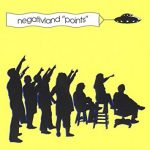
So that’s why we ended up making another record. There was interest. I think we had sold maybe 1000 copies by the time we put out our second record, which then sold 2000. I remember thinking, “Well, that’s fantastic! We doubled our sales! We reached twice as many people! Oh my God!” Now, if I’d been buying into the idea of success from what was coming, at the time, from Rolling Stone magazine or MTV or what have you, I would’ve said, “We failed. We only sold a few thousand records. We should quit.” But we were just absolutely thrilled to death.
As we kept going, we just incrementally did a little better, and a little better. Then, finally, with Escape From Noise, which came out in 1987, that record was actually very well received and got into heavy rotation on college radio stations all over the country, which shocked the hell out of us. I hope I’ve kept my sense of humbleness and sort of a childlike delight in just being thrilled that anyone is interested at all in what we’re doing [laughs]. So hanging onto that, too, is very important. Not becoming jaded about it, or cynical about it.
Which, all that being said, is interesting because this new record that we’re working on – it is very funny, but every track is very dark. It is dark. That’s the times we’re living in – it’s dark. We’re still having fun, though. I was talking to Jon as we were working on the Pro Tools sessions for this record, and I said, “I wonder how many groups in the world sit around and, as they’re working on a record, they’re laughing all day, and then every time they have an idea that makes a track even funnier, they put it in.” He said, “I don’t think that’s how most people make music.” Like, I love Philip Glass, but I don’t think he’s sitting around looking for the yucks as he composes [laughs]. So there’s that, too.
Back in the day when I was kind of paying attention to what was happening with industrial music, and checking out records by Skinny Puppy, Revolting Cocks, Front Line Assembly, Front 242, Consolidated, all those groups, I found it to be sonically interesting, but I said, “Boy, they are not funny. These people are too serious” [laughs].

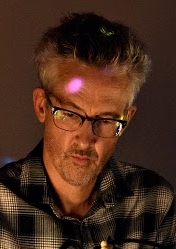
Great interview!
Hope they tour a little wider…
very excited for some NEW NEGATIVLAND material!
now, more than ever….